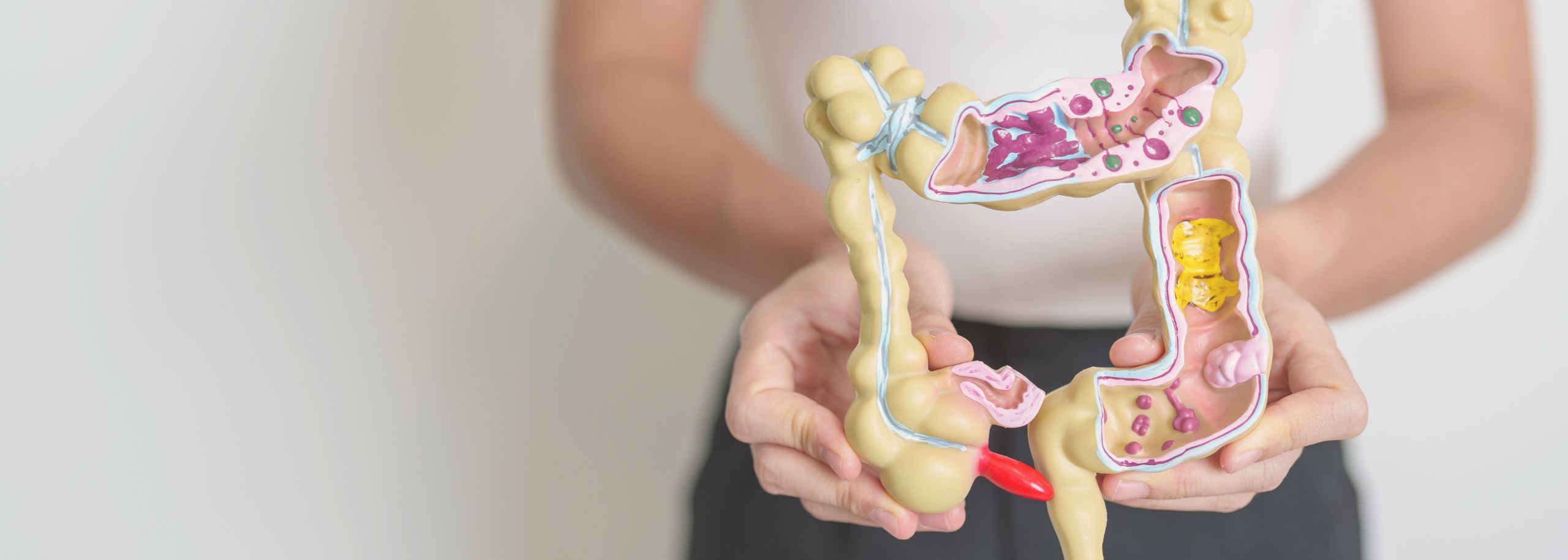Scientists from Matthias Lütolf’s research group at the Technical University of Lausanne (Switzerland) have developed mini-guts that accurately mimic the onset of cancer. This scientific breakthrough makes it possible to elucidate multiple processes involved in cancer development within a single animal-free model – an absolute first. This advancement offers hope not only for better cancer treatments without animal testing but also for faster and safer drug development for patients.
The publication of this breakthrough in Nature underscores the importance and potential of animal-free research methods.
Tumors in cultured mini-guts
Matthias Lütolf and his research team grew mini-colons on a scaffold, giving the tissue the correct 3D shape. Additionally, the researchers developed a technique to induce tumor growth in these healthy mini-guts on command. By shining blue light on a specific part of the mini-gut, the DNA in the cells changes, allowing the tumors to be tracked for weeks. The team has already used the mini-guts to identify molecules that contribute to colon cancer development.
Why these mini-guts are groundbreaking
- An animal-free model suitable for complex questions: cancer arises from a series of processes and consists of various types of healthy and cancer cells that interact on a 3D level, making it difficult to create a research model. The animal-free models developed in recent years were relatively simple, often leading researchers to use mice for complex questions. This is no longer necessary.
- The mini-guts are more realistic than previous animal-free models: While organoids have been used for cancer research, these mini-guts allow researchers to grow a tumor in a gut that is not only human but also healthy. This closely resembles the actual situation. The researchers’ control over where and how the tumor grows is crucial because the more control researchers have, the less they leave to chance, and the better they can answer their research questions.
- The mini-guts maintain the 3D structure of the tissue: A gut organoid is essentially a cluster of cells with a gut cavity in the middle. Dead cells and other debris accumulate in it, requiring frequent cleaning that damages the structure. This is not needed with these mini-guts, allowing them to grow undisturbed for weeks.
Why this breakthrough is important for cancer research and animal testing
Understanding how healthy cells transform into cancer cells is crucial for drug development. The mini-guts are the most realistic animal-free model to date. Such a model not only leads to better insights and faster drug development for colon cancer but also reduces the number of laboratory animals used.
This is critically needed. The number of laboratory animals used specifically for colon cancer research is unknown, but in 2022 alone, the Netherlands Cancer Institute conducted 18,000 animal tests for cancer research, 99% of which involved mice. Additionally, 37,529 mice were bred but not used, most of which were euthanized.
The path to fully animal-free research
Unfortunately, this research still used laboratory animals. The mini-guts were made from mouse stem cells and were eventually transplanted into mice. However, a positive outcome emerged: researchers concluded that the mini-guts behave the same in culture dishes and in the mouse body. In the next study, the mini-guts will not be transplanted into mice. The next step is to build the same model using human stem cells, making the research entirely animal-free.
The significance of Nature’s recognition
The publication of this research in Nature is significant. Nature is globally recognized as one of the most prestigious and influential journals in natural science research. Due to its wide readership, articles have a substantial impact. Often, a publication leads to more citations, and the rigorous selection and extensive peer reviews during the publication process serve as a quality mark. This quality mark is now indelibly stamped on this remarkable (nearly) animal-free innovation.
At Proefdiervrij, we believe that animal-free research deserves more recognition and publications in scientific journals. If scientific journals truly stand for innovation, they should provide a better and larger platform for animal-free, human-oriented research methods. This would not only advance science but also contribute to a future without animal testing, focusing on human-centered solutions.
Join our LinkedIn group
The Animal Free Gallery is your platform to share successes, exchange knowledge, and network with like-minded professionals and scientists. Together we can make strides towards innovations without animal testing. Join us and celebrate every development towards ethical and innovative research!


